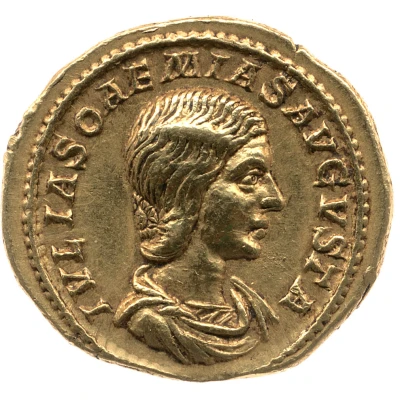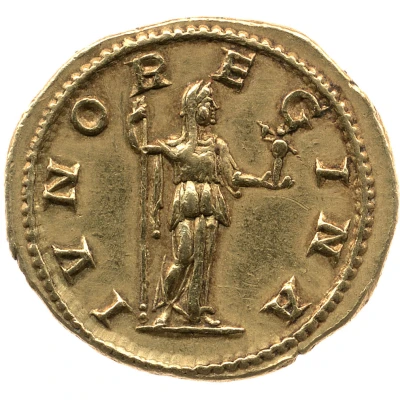Aureus - Elagabalus and Anna Faustina ANNIA FAVSTINA AVGVSTA
| Gold | - | - |
| Issuer | Rome › Roman Empire (27 BC - 395 AD) |
|---|---|
| Emperor | Elagabalus (Sextus Varius Avitus Basianus) (218-222) |
| Type | Standard circulation coin |
| Years | 218-222 |
| Value | Aureus (25⁄2) |
| Currency | Antoninianus, Reform of Caracalla (AD 215 – 301) |
| Composition | Gold |
| Shape | Round (irregular) |
| Technique | Hammered |
| Demonetized | Yes |
| Updated | 2024-10-05 |
| Numista | N#276872 |
|---|---|
| Rarity index | 100% |
Reverse
Bust of Annia Faustina, diademed, draped, right; behind, star.
Script: Latin
Lettering: ANNIA FAVSTINA AVGVSTA
Translation:
Annia Faustina Augusta.
Empress (Augusta) Annia Faustina.
Comment
Source:Online Coins of the Roman Empire (OCRE)
Interesting fact
One interesting fact about the Aureus coin featuring Elagabalus and Anna Faustina is that it was issued during a time of significant economic and political change in the Roman Empire. The coin was minted during the reign of Elagabalus, who was known for his excesses and controversial policies, including his attempts to introduce Eastern religious practices to Rome and his efforts to reduce the power of the Roman Senate. The coin's issuance coincided with a period of inflation and economic instability in the empire, which led to a decrease in the value of the Roman currency. Despite these challenges, the Aureus remained a valuable and highly sought-after coin, and its gold content made it a symbol of wealth and power.

